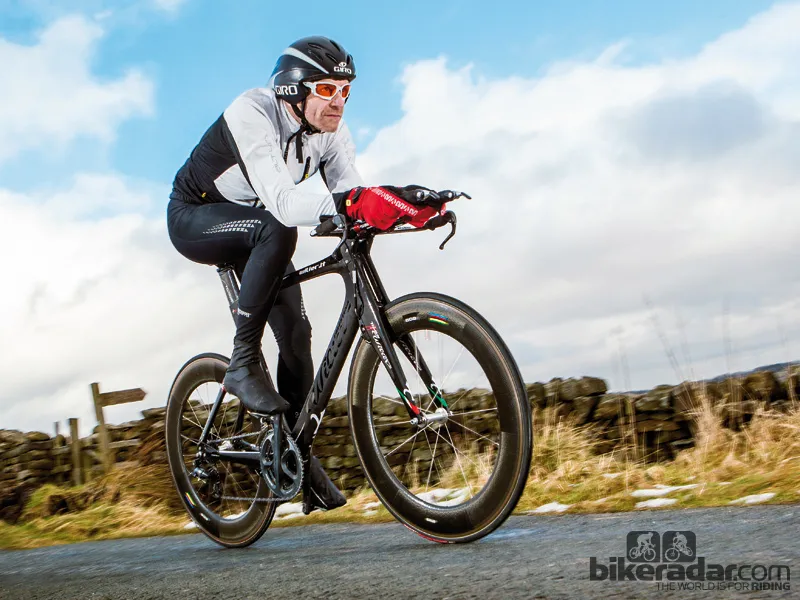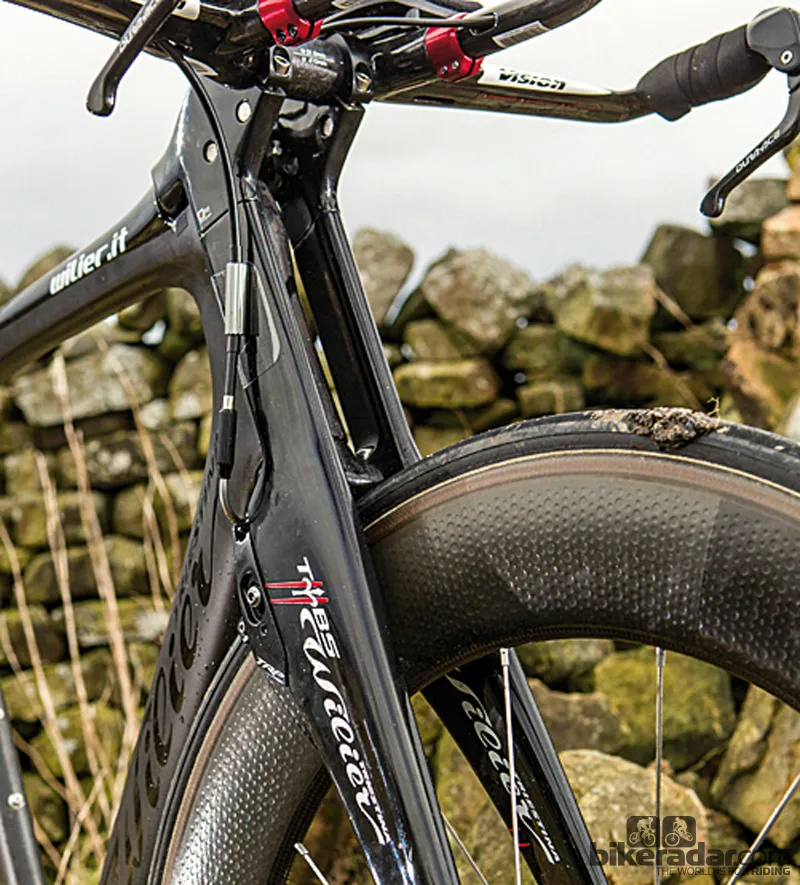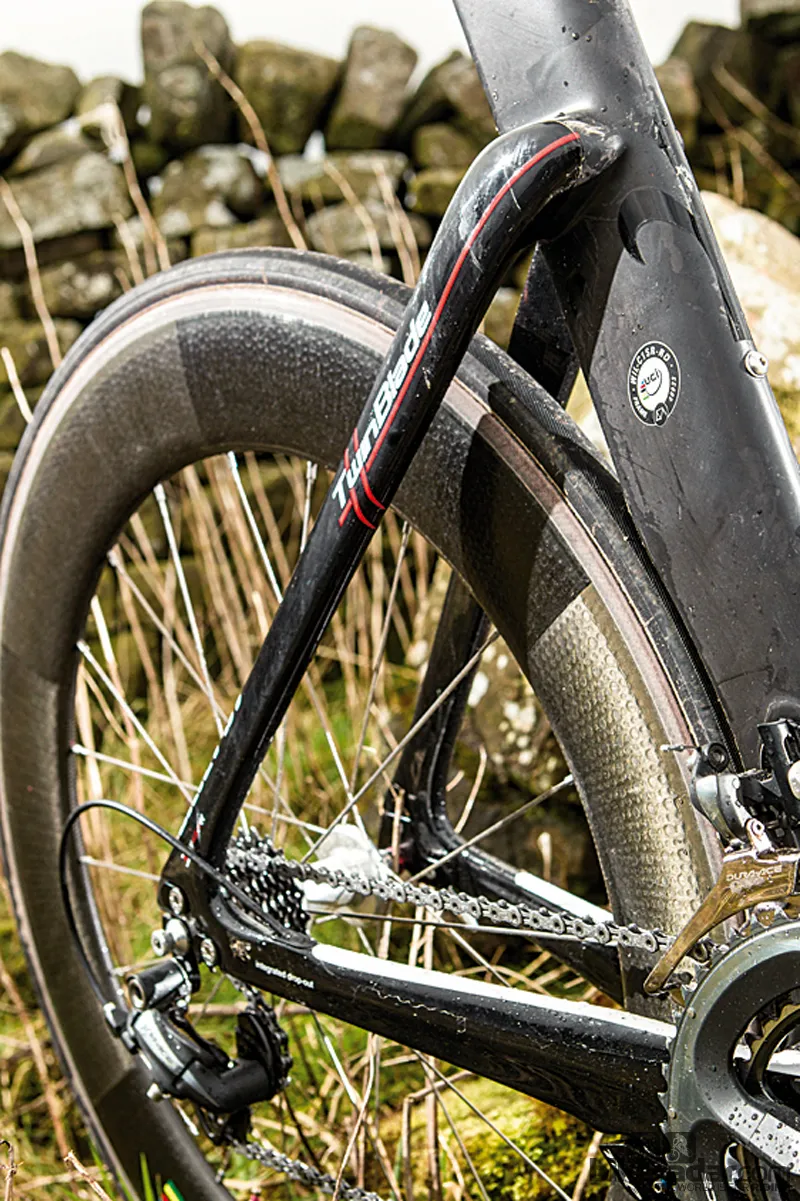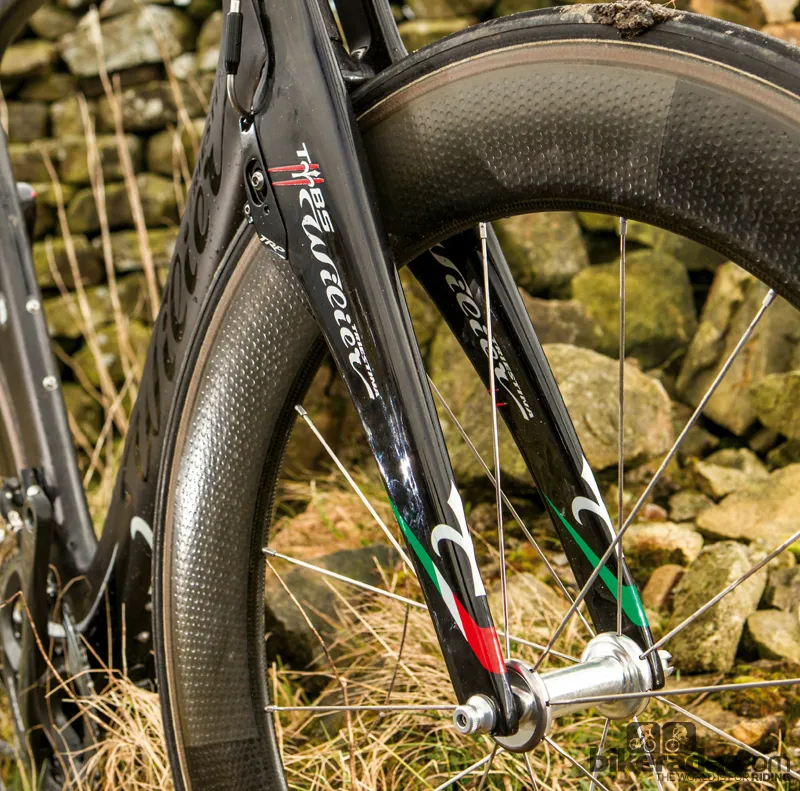This Italian wind-cheater uses a unique Twin Blade fork and smoothly flowing lines to create possibly the most charismatic but still rapaciously rapid aero bike we’ve ever had the pleasure of riding.
Ride & handling: Sublimely poised and gets better the longer you go
It’s a tribute to the Wilier that despite ‘primitive’ feeling bar shifters and last-generation wheels it still oozes the kind of decorum, class and sheer quality that most aero bikes could only dream of.
Trying to attach some kind of analytical, statistical or geometry-based reasoning to this sublime sensation is damn near impossible, but every test rider who rode the Twin Blade was positively rapturous.
As you might expect, the direct fork-mounted handlebar is extremely stiff and borderline palm bruising on rough road surfaces, and it’s a tribute to the Wilier/Vision collaboration cockpit that comfort in an aero tuck is as good as it is.
Despite a conventional rather than soft snouted saddle, the long-haul comfort of the rear end is impressive. This promotes a naturally smoother, more flowing pedal spin than the staccato chatter coming through other TT bikes at this price point.
It’s also happy to cruise at a quietly efficient pace rather than continually nagging you to nudge the pace upwards, and our rides were generally characterised by a grin rather than a grimace.
There’s enough compliance to keep the rear wheel glued down on climbs too, where the reduced weight of the non-electric transmission also gives it a slight gram count advantage.
While getting each gear is progressively more awkward, the way it spins seemingly effortlessly down the block before heaving into the big ring and lighting the afterburners means shifting is the only part of acceleration that feels like a bit of a chore. Once up to speed, the Twin Blade had no trouble pegging the pace of other superbikes over shorter, flat-out test loops.
The longer we rode it, the more the forgiving ride left us fresh and ready to take the fight to the clock in the final furlongs. On race simulation rides it also delivered us to the start of the run in a relaxed and ready – rather than ravaged – state, making it an ideal race partner.
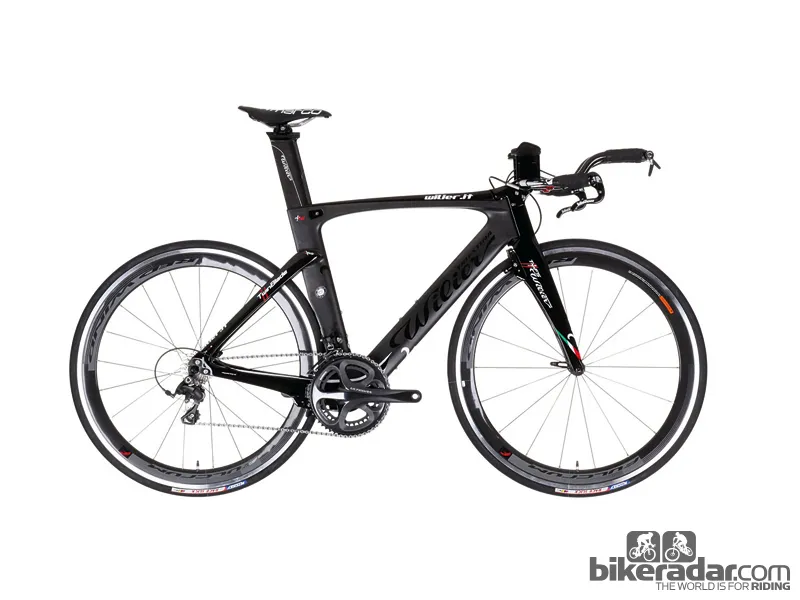
Frame & equipment: Distinctive but effective aerodynamics with powerful drive
As the name suggests, it’s the unique Twin Blade fork that dominates Wilier’s very fast chassis. Extending the fork legs up in front of the head tube is at odds with other manufacturers’ attempts to make the head tube frontal aspect as small as possible, but Wilier say it’s all about managing airflow.
Rather than the air bulging out around the front of the frame, the twin fork legs – or flow stabilisers – guide wind smoothly past the front end. A twin bar clamp section then bolts into the top of the legs for a very direct and accurate steering setup.
The extra wide stance also means maximum possible clearance between rim and fork leg, which Wilier say is the best way to reduce turbulence around the tyre. The super-deep fork legs also blend into the rear mounted V-brakes to minimise drag, although side piping the cable up the outside of the head tube certainly isn’t the neatest cabling solution we’ve seen.
The main tubes use conventional deep oval profiles with a thin strip of blunt back edge to form a virtual tail. The seat mast gets a multi-position top clamp with internal ‘V’ wedges holding it in place for minimal windflow disturbance.
The top of the deep-bladed seatstays are spaced apart with big side bulges to give them a similarly wide stance to the front forks for cleaner airflow. Super deep chainstay ‘thighs’ mount the rear TRP brakes underneath, behind a BB spoiler.
The horizontal dropouts allow fast and easy wheel insertion but can be unbolted and slid backwards and forwards 6mm to accurately set tyre clearance against the curved wheelhugger. The front mech mount can also be unbolted and rotated from the far side to give ideal alignment with different chainring sizes. It’s fully plumbed for Di2 wiring too, although placing the battery mounting point on the lower down tube – rather than internally – is disappointing.
Our sample chassis was built up with a suitably aspirational component banquet for a bike of this calibre. The gearing is Dura-Ace 7900 10-speed, but this time we’re dealing with the conventional cable version, which feels positively archaic and surprisingly awkward to use compared with push button electrics, and the Zipp 808 tub wheels are the older, narrower pre-Firecrest type too.
However, you can specify which parts you want on your frame according to your budget.
Test spec
- Wheels: Zipp 808 carbon tub
- Tyres: Vittoria Open Corsa Evo tubulars 700x22c
- Crankset: Shimano Dura-Ace 7900 53/39T
- Cassette: Shimano Dura-Ace 11-25T
- Derailleurs: Shimano Dura-Ace 7900
- Chain: Shimano Dura-Ace 7900
- Brakes: TRP Ti V brakes
- Other stuff: Wilier Aero TT seatpost, Wilier Vision carbon base bar and extensions, Integrated Twin Blade direct mount stem, Selle San Marco saddle
This article was originally published in Triathlon Plus magazine, available on Zinio.
